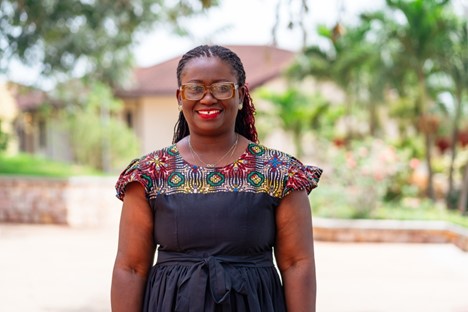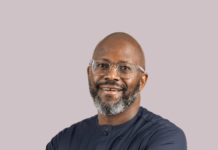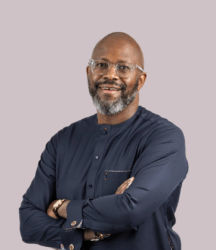Dr. Millicent ADJEI
The role of education in driving inclusion aligns closely with this year’s International Women’s Day theme, ‘Accelerate Action’, especially on the African continent, where gender equality remains a significant challenge.
Despite progress over the past two decades in expanding access to education for women and girls, substantial gaps persist. To truly accelerate action toward bridging these gaps, we must go beyond improving access and ensure that education is both high-quality and inclusive.
The Global Gender Gap Report 2024 by the World Economic Forum reveals that Sub-Saharan Africa continues to have significant gender disparities in education. For instance, Chad has one of the lowest educational attainment scores globally, with low performance across all dimensions.
This is particularly concerning, given the profound impact of education on women’s personal and economic outcomes. Education equips women and girls with the skills needed to participate fully in economic development—improving not just their lives, but also those of their families, communities, and nations.
While global initiatives such as Education for All, the Millennium Development Goals, the Sustainable Development Goals, and Ghana’s Free Senior High School program have increased access to education for women, these efforts have often come at the expense of quality. Access alone is not sufficient.
Accelerating action requires a deliberate focus on providing high-quality, inclusive education environment—one that not also ensures that women are learning in an environment that enables them to thrive, and acquire the relevant skills and knowledge needed for long-term success.
Our experiences at Ashesi University
For the past 23 years, Ashesi University has been committed to achieving gender parity across our institution. Through a comprehensive financial aid program, targeted outreach strategies focused at women, and multiple mentorship initiatives, we have maintained a 1:1 male-to-female student ratio for over a decade now, with similar numbers for our faculty and staff. 40percent of students in our undergraduate Engineering classes are women.
We see the benefits—in the effectiveness of teaching and learning in our classrooms, in the spaces our alumni are able to work and have in, in being able to present stronger role models, and in the overall strength of our campus experience. Here are some of the benefits that having an inclusive campus has enabled for Ashesi:
Strengthened academic excellence and innovation: Diverse Perspectives in Problem-Solving: With a near 50/50 gender balance, classroom discussions, projects, and research benefit from diverse viewpoints, leading to richer insights and more innovative solutions.
Increased leadership and representation: Ashesi’s inclusive approach has resulted in more female student leaders in student government, clubs, and academic groups. This helps normalise women in leadership roles, both on campus and in the professional world.
Role models for future generations: Successful women serve as inspiration for younger students, proving that women can thrive in any field, including male-dominated industries like engineering and entrepreneurship.
Stronger community impact: Ashesi’s inclusive approach has helped create changemakers who advocate for gender equity in their workplaces and communities, leading to broader social progress.
Our experiences at Ashesi are proof that accelerating bold action toward inclusive and high-quality education for women can be beneficial for entire communities. This why we believe that more institutions and actors must take collective, strategic action through partnerships, policy reforms, and financial commitments.
This is not just about increasing access—it is about ensuring that women receive an education that guarantees their success, improves their long-term outcomes, and enables them to fully participate in the economic development of Africa’s countries.
Ashesi University’s progress in achieving gender parity offers valuable lessons for institutions looking to accelerate inclusion. Its approach goes beyond increasing enrollment numbers—it is about transforming systems to ensure that women thrive, lead, and shape the future. Three of the strongest takeaways from Ashesi’s experience highlight how others can create lasting impact.
Make gender inclusion a measurable, institutional goal
Ashesi set a clear 50/50 gender parity target and embedded it into its long-term strategy. This commitment ensured that every aspect of the university—from admissions to leadership development—was designed to support gender balance. Other institutions can learn from this by making gender equity a measurable goal, tracking progress, and holding themselves accountable. Inclusion cannot be a side project; it must be a fundamental part of an institution’s mission.
Remove barriers through financial aid and targeted recruitment
Recognizing that cost is a major barrier for women in higher education, Ashesi implemented financial aid programs that enable access. But access alone is not enough—Ashesi also took an active approach to recruitment, encouraging women to enter male-dominated fields like engineering and computer science. By combining financial support with outreach and mentorship, the university ensured that women were not just admitted but set up for success. Institutions must take a similarly proactive approach, offering scholarships and actively bringing more women into spaces where they have been historically underrepresented.
Foster a campus culture that empowers women to lead
Ashesi goes beyond gender parity in enrollment by creating an environment where women are encouraged to lead. Through student leadership opportunities, mentorship programs, and a culture of inclusion, female students gain the confidence and skills to excel beyond the classroom. Ashesi also engages male students in the conversation, reinforcing the idea that gender inclusion benefits everyone.
Importantly, at Ashesi students see strong role models in the women who lead different departments and teams on campus. Other institutions can accelerate progress by ensuring that once women enter their programs, they are equipped with the networks, leadership skills, and support systems to thrive.
Gender inclusion does not happen by accident—it requires intentionality, sustained commitment, and a willingness to challenge traditional norms. Its success shows that when institutions take a holistic approach, addressing financial barriers, recruitment challenges, campus culture, leadership representation, and strategic partnerships, they do more than achieve gender parity.
They create environments where women are empowered to thrive, lead, and drive societal transformation. The question for other institutions and organizations is not whether gender inclusion is possible, but whether they are willing to make the long-term commitment required to achieve it.
>>>the writer has over two decades of experience in higher education administration. She is the Director of the Office of Diversity and International Programs at Ashesi University. She leads internationalization efforts, international student management, inclusion programming, and appropriate sexual behaviour initiatives and is currently leading the development of Ashesi’s disability and accessibility programs. Her recognitions include the 2024 Distinguished International Alumna Award from the University of Minnesota, Ford Foundation IFP Fellowship, and the ACU Martha Farrell Memorial Fellowship. She holds a BSc. in Business Administration from the University of Ghana Business School, an MA in Organizational Leadership, Policy, and Development, and a Ph.D. in Comparative and International Development Education from the University of Minnesota.










